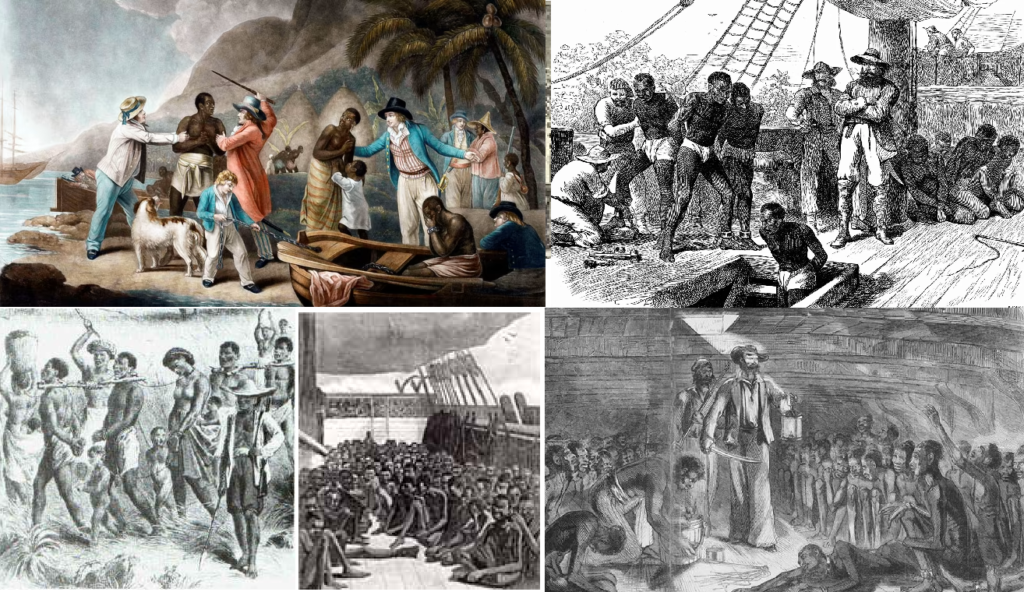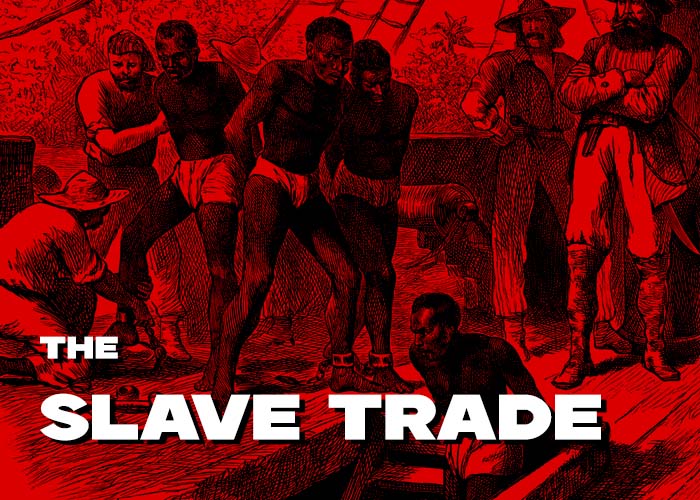The Transatlantic Slave Trade (15th–19th centuries) was one of the most inhumane and tragic periods in human history. It involved the forced transportation of millions of Africans across the Atlantic Ocean to be sold as slaves in the Americas and other parts of the world. It was a devastating chapter in world history that left scars on individuals, families, communities, and nations for generations to come. It’s important that we remember the story of the millions of lives that were affected by this trade, not only to honor those who suffered but also to ensure that such atrocities never happen again.
The Beginnings of the Slave Trade
The Transatlantic Slave Trade began in the 15th century, a time when European powers like Portugal and Spain were expanding their influence across the world. These powers were searching for new sources of wealth, which included the development of plantations in the Americas. However, the land in the Americas was vast and fertile, but the native populations had been decimated by diseases brought by Europeans, such as smallpox, and by violence from settlers.

Because of this, the need for labor grew in the Americas, especially to work on sugar, tobacco, and cotton plantations, as well as in mining. By the late 1400s, the Portuguese began capturing enslaved Africans from West Africa and shipping them to their colonies on the islands in the Atlantic, such as Madeira and the Azores. The Spanish also joined in the slave trade, importing African slaves to work on their sugar plantations in the Caribbean.
By the 1500s, the demand for labor in the Americas had escalated. The trade grew rapidly, and European countries such as Britain, France, and the Netherlands became heavily involved, each sending large numbers of ships to Africa to capture and transport enslaved people to the New World.
Key Locations and Routes
The route taken by enslaved people, known as the Middle Passage, began in Africa and ended in the Americas. However, the process started long before the ships set sail. It began with the capture of Africans, often in the interior of the continent. European traders would establish forts and trading posts along the African coastline, particularly in places like Ghana, Nigeria, Angola, and Senegal. At these forts, African traders and European slavers would conduct business—African chiefs and rulers sometimes participated in the capture and sale of enslaved people, often in exchange for European goods such as weapons, alcohol, and textiles.
Once enslaved Africans were captured, they were marched to coastal ports, where they were held in brutal conditions in slave forts until the ships arrived to take them away. These people were then crammed into ships for the Middle Passage, a horrific journey across the Atlantic. They were often chained together in the dark and crowded holds of the ships. Disease, malnutrition, and violence were rampant during the voyage, leading to the deaths of countless men, women, and children.

The Middle Passage
The Middle Passage was the most terrifying part of the journey. It was the stage that involved the crossing of the Atlantic Ocean, and it is remembered as the most brutal segment of the entire Transatlantic Slave Trade. Enslaved Africans were packed into ships with barely enough room to sit, let alone move. The journey across the ocean took anywhere between 6 to 8 weeks, depending on weather conditions and the direction of the wind.
The conditions onboard were so appalling that many enslaved people died from diseases like dysentery, smallpox, and scurvy, or from malnutrition. The captives were often given very little food or water and were forced to relieve themselves in the same place where they slept. The stench of disease and human waste was overwhelming, and many enslaved people did not survive the journey.
Many attempted to escape, either by committing suicide by jumping overboard or staging rebellions, but most were unsuccessful. Some became so ill that they could not continue, and many died in the cramped, suffocating conditions of the slave ships.
The Slave Auctions in the Americas

Once the ships reached their destinations in the Americas, the enslaved Africans were sold at slave markets. These auctions took place in places like Charleston, South Carolina, New Orleans, and Havana. Enslaved individuals were displayed like livestock, with prospective buyers inspecting their bodies and physical strength. This was a horrific and dehumanizing practice where the lives of people were reduced to mere property, evaluated solely for their utility in labor.
The slaves sold at these markets would often be separated from their families. The women were often sold for domestic work, while the men were sold to work on sugar, cotton, and tobacco plantations or in mines. Children were sold as well, often to work in homes or fields. The most heart-wrenching part of these auctions was the emotional pain of families being torn apart, as they had no control over where they would end up or who they would be forced to work for.
Life as a Slave
The life of a slave in the Americas was harsh and grueling. On sugar plantations in places like Jamaica, Haiti, and Brazil, enslaved Africans worked long hours under brutal conditions. The work was incredibly difficult, and the rewards were non-existent. They were treated as less than human, enduring physical and emotional abuse from their owners.

The same was true for slaves in the cotton fields of the Southern United States, where conditions were no better. They were whipped, beaten, and starved. Enslaved people had no legal rights. If they were punished or mistreated by their masters, they could not seek help or appeal for justice. Slavery took away their dignity and their humanity.
Yet, despite the cruelty of their conditions, enslaved Africans found ways to resist. Some tried to escape, fleeing into the woods or attempting to reach free territories in the North. Others sabotaged equipment, worked slowly, or engaged in acts of rebellion. Many enslaved people also found solace in their spiritual beliefs, singing songs, and passing down stories that helped them maintain their identity in the face of dehumanization.
The End of the Slave Trade
The movement to abolish the slave trade started to gain momentum in the late 18th century. Abolitionists, who were individuals and groups who wanted to end slavery, began to speak out against the brutal trade. Their efforts included writing pamphlets, publishing books, and holding public meetings. The British abolitionist movement gained significant traction, led by figures like William Wilberforce and the Anti-Slavery Society.

By the early 1800s, Britain passed the Slave Trade Act of 1807, which made it illegal to engage in the slave trade in the British Empire. Other countries soon followed suit. The United States banned the importation of enslaved Africans in 1808, though illegal smuggling continued for years after. The movement for abolition continued to grow, and slavery was eventually abolished in most of the Americas and Europe in the mid-to-late 19th century.
The Legacy of the Slave Trade
The Transatlantic Slave Trade lasted over 400 years and resulted in the forced migration of around 12 million Africans across the Atlantic. This legacy has left lasting scars on both the African continent and the Americas. In the U.S., slavery officially ended with the 13th Amendment to the Constitution in 1865, but the effects of slavery continued for generations, as former slaves were subjected to segregation, discrimination, and violence.
The economic impacts of the slave trade were also significant. Many industries in the Americas, such as sugar, cotton, and tobacco, thrived because of the labor of enslaved people. Entire economies were built on the backs of African slaves, and it was only after the abolition of slavery that many of these economies began to shift toward more sustainable practices.
The racial inequalities that were established during the era of the slave trade continue to shape society today. The legacy of racism, inequality, and discrimination that originated in the Transatlantic Slave Trade persists, and the fight for racial justice remains ongoing.
Conclusion
The Transatlantic Slave Trade was a crime against humanity, one that dehumanized millions of people and left a dark and painful legacy that still resonates today. The victims of this trade were not just numbers or statistics—they were human beings with families, dreams, and cultures. Their lives were tragically stolen, but their stories should never be forgotten. Remembering the horrors of the Transatlantic Slave Trade is essential, as it not only honors the lives lost but also serves as a reminder of the dangers of racism, prejudice, and the exploitation of others.
The fight for justice, equality, and human rights continues today, and understanding the history of the slave trade is an important step in the struggle for a more just and compassionate world.
Thank you for taking the time to read and reflect on this important piece of history. Your awareness helps us honor the past and shape a more compassionate future.





